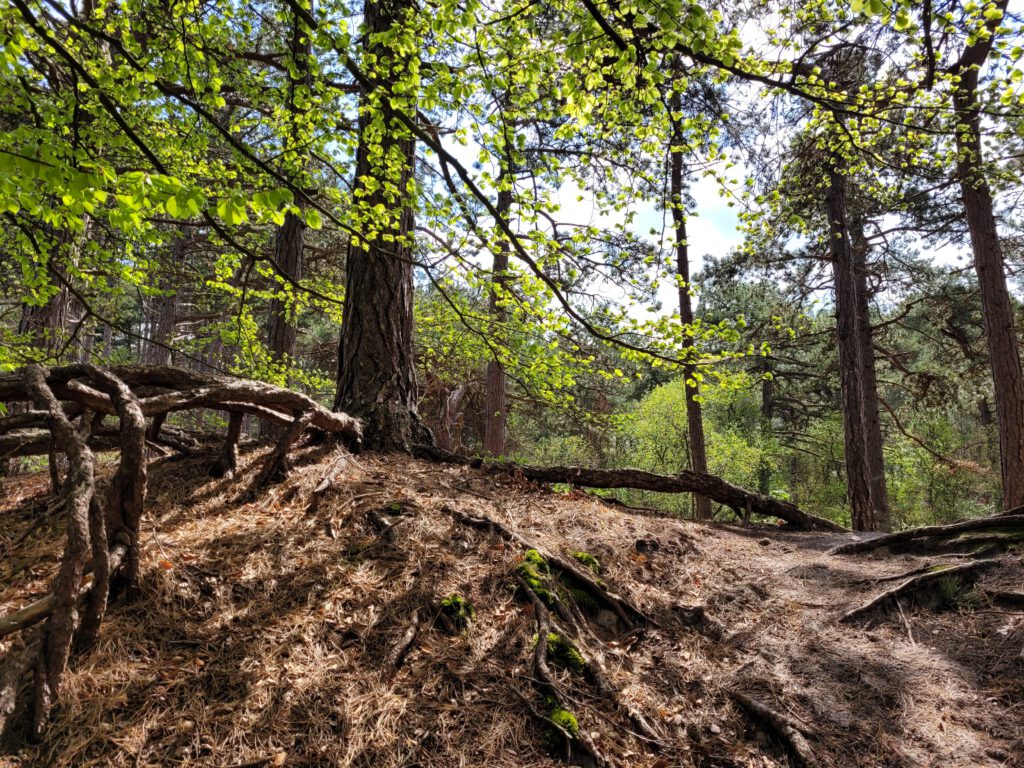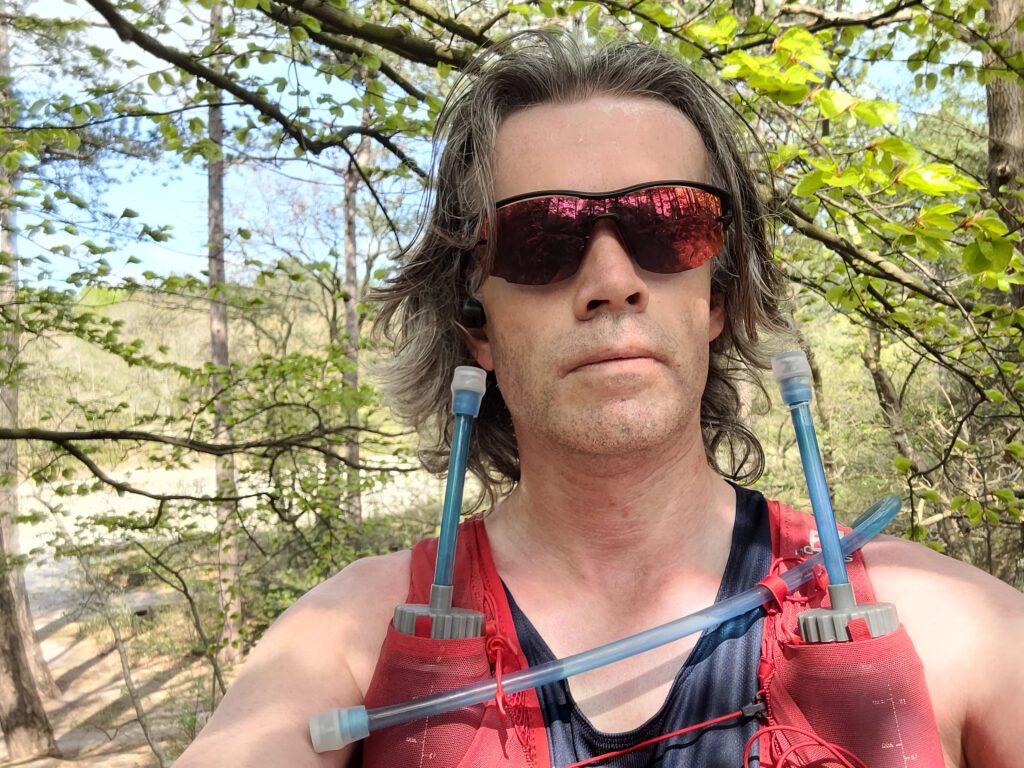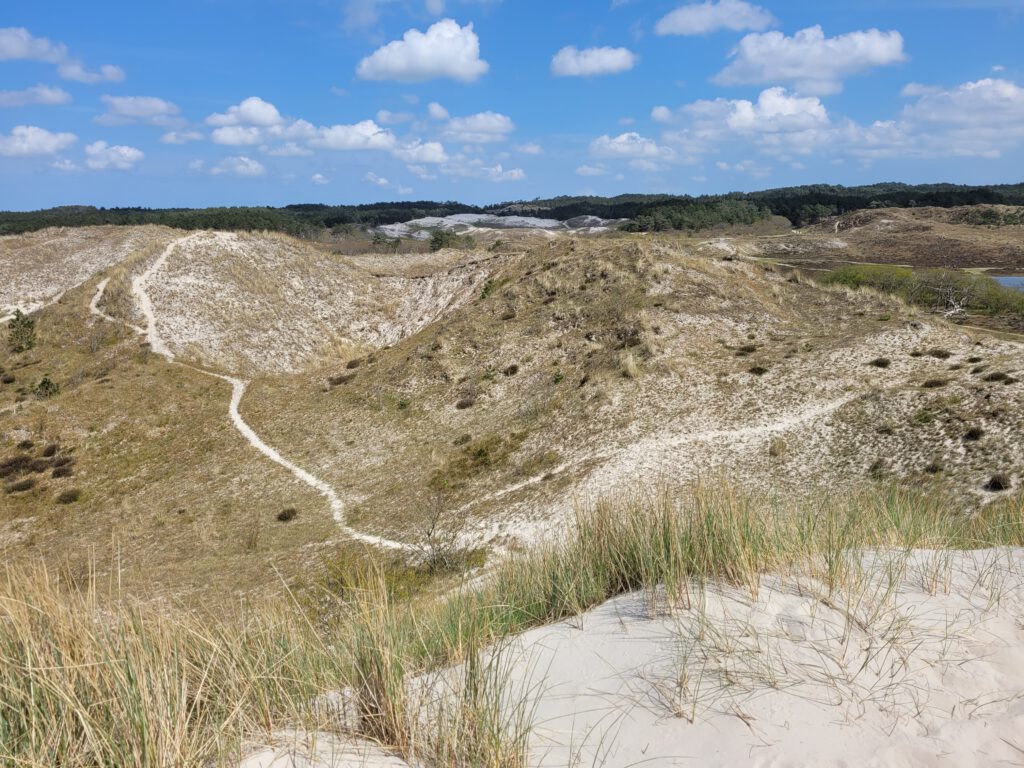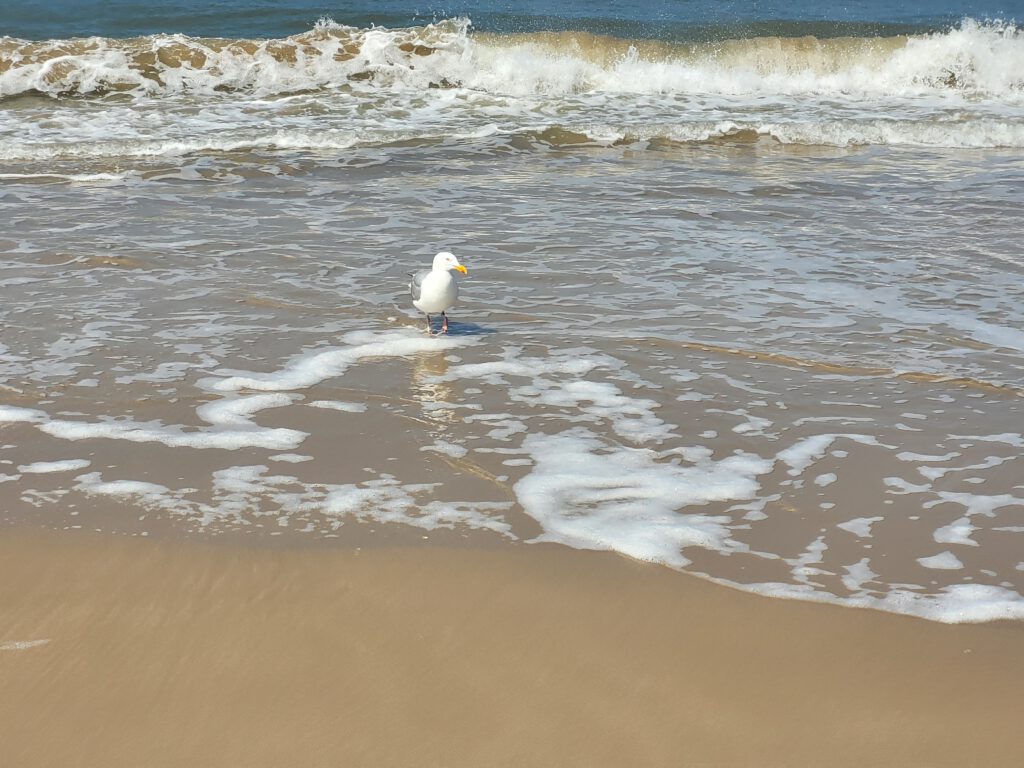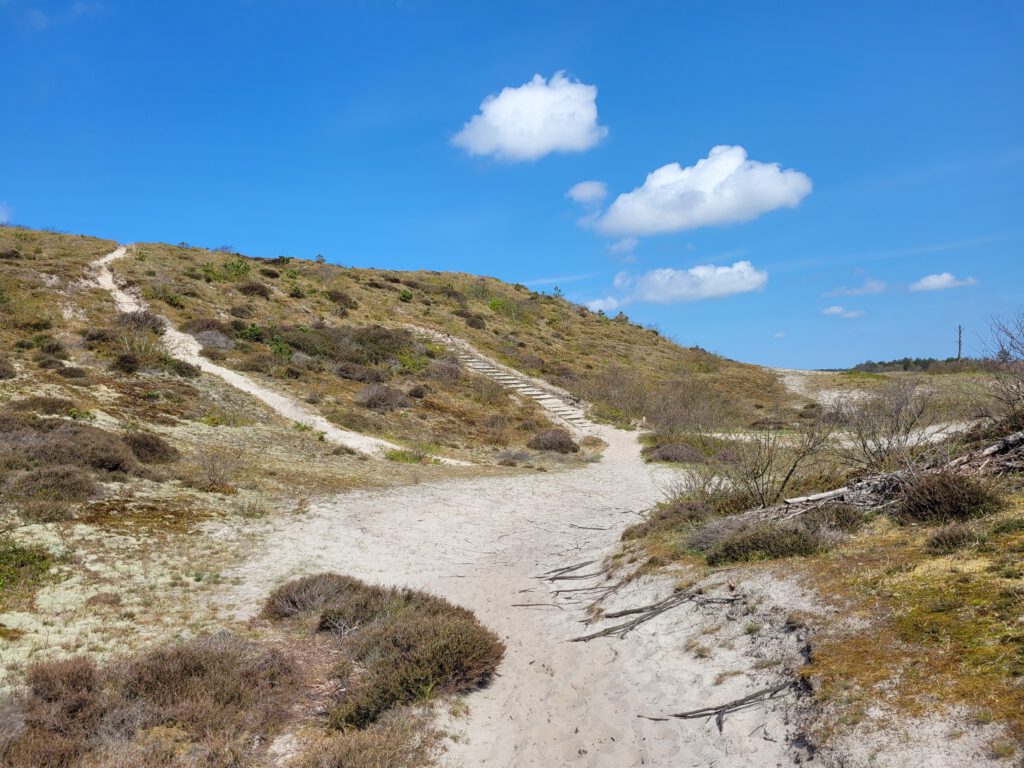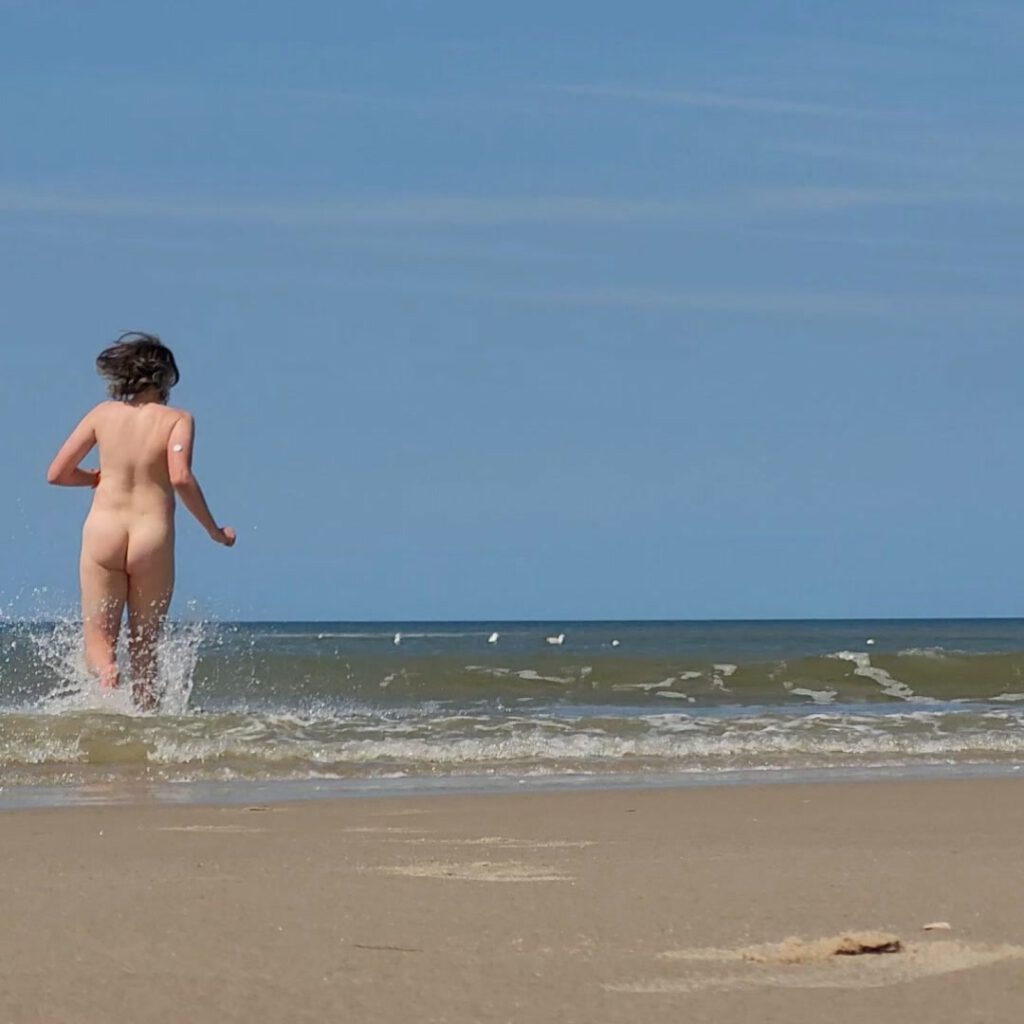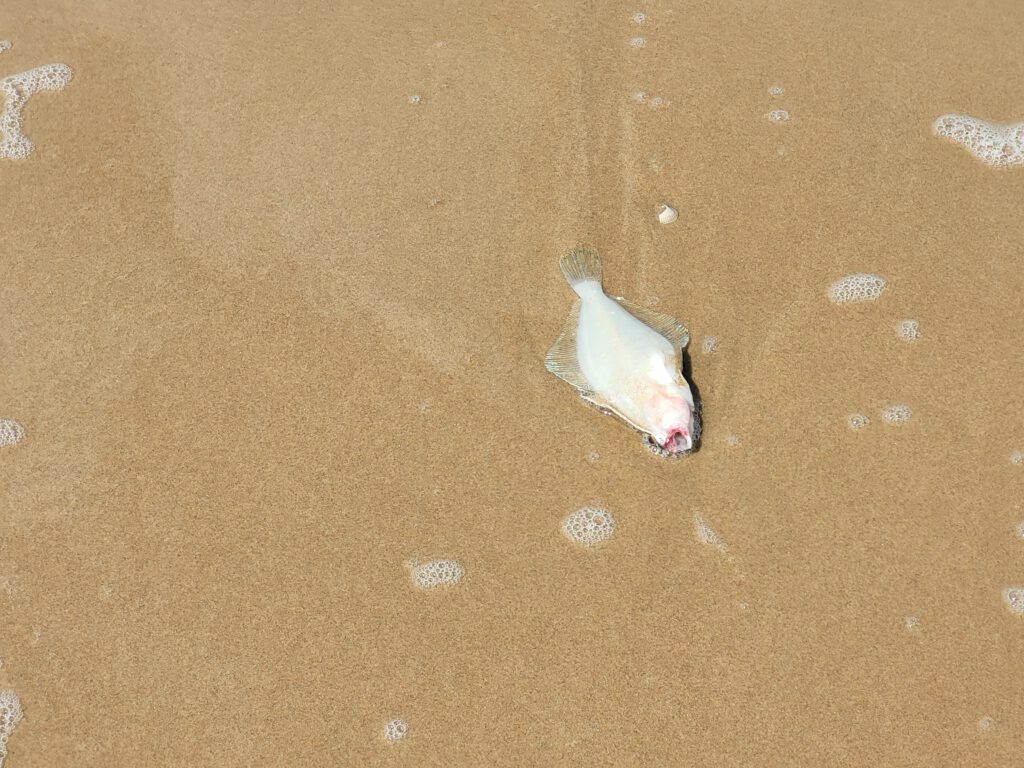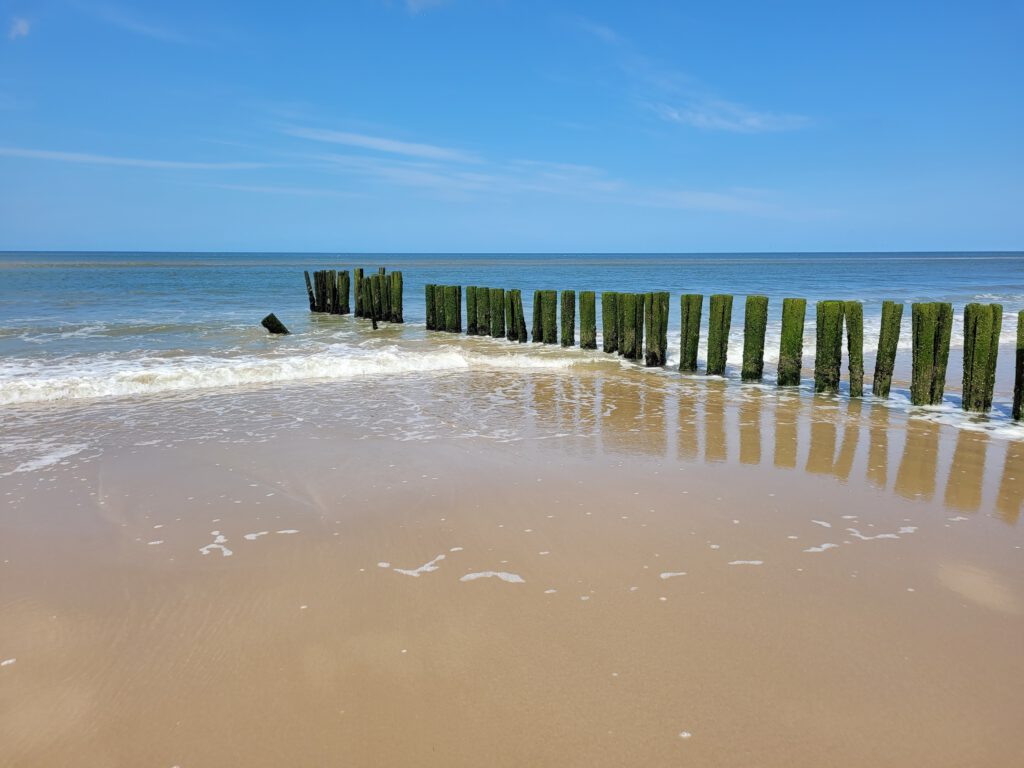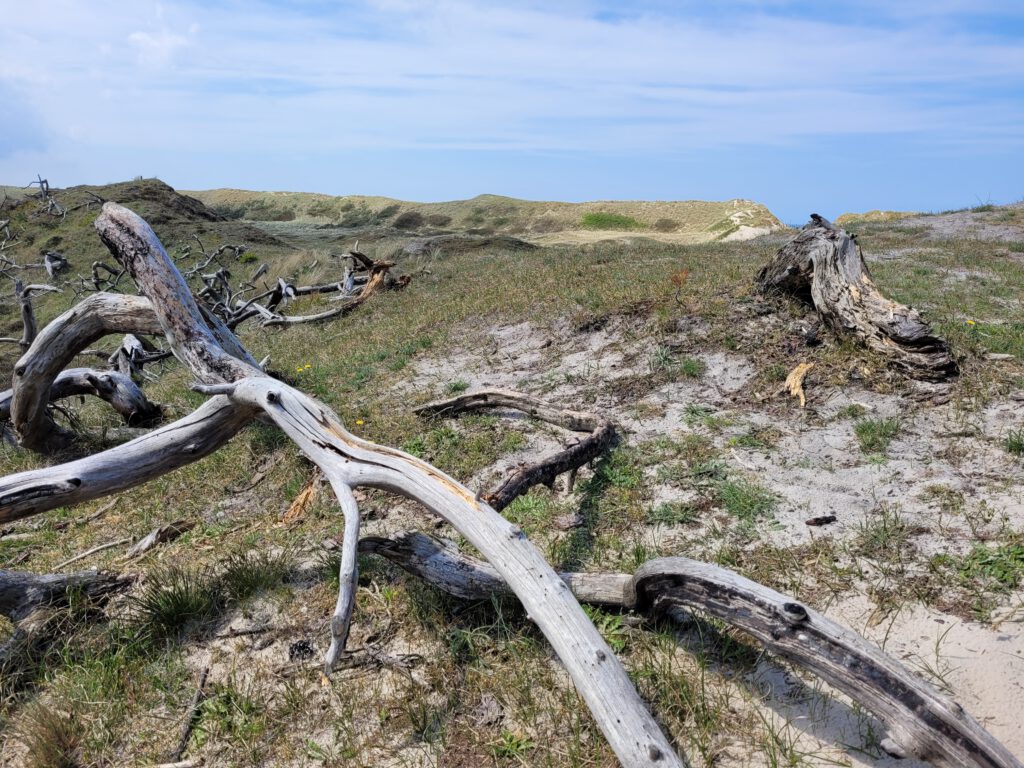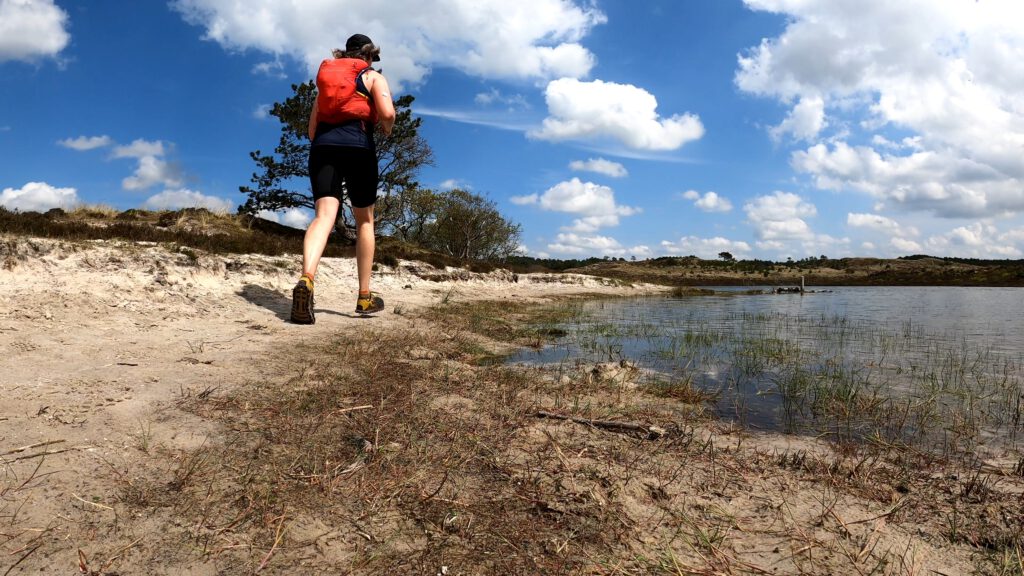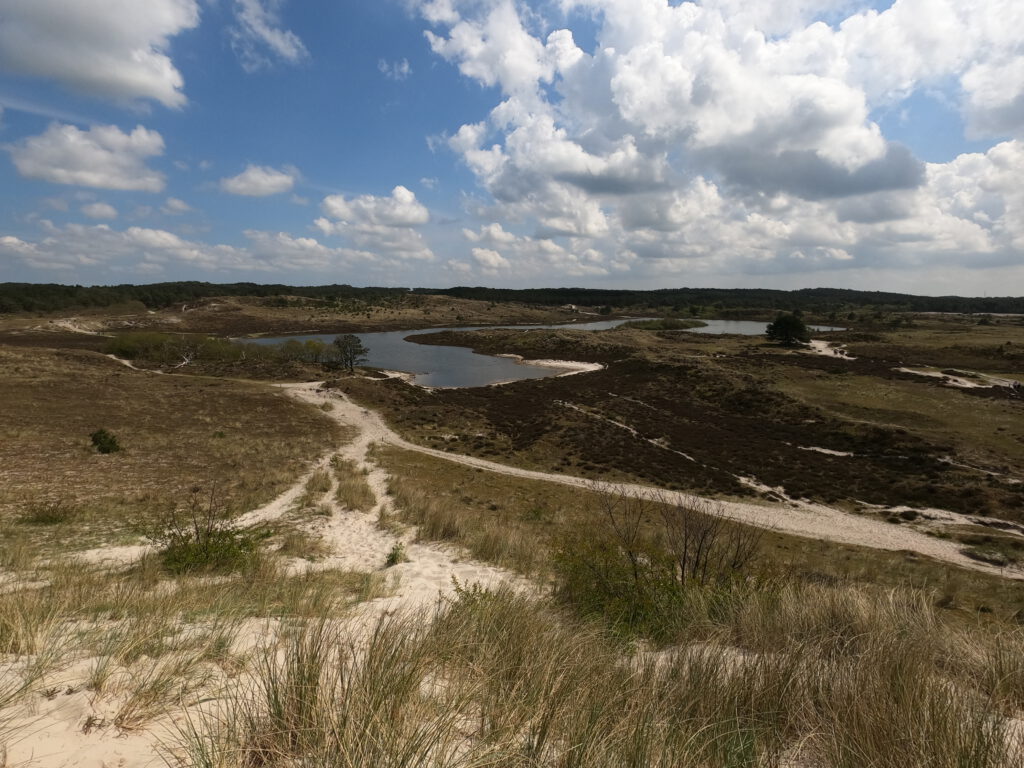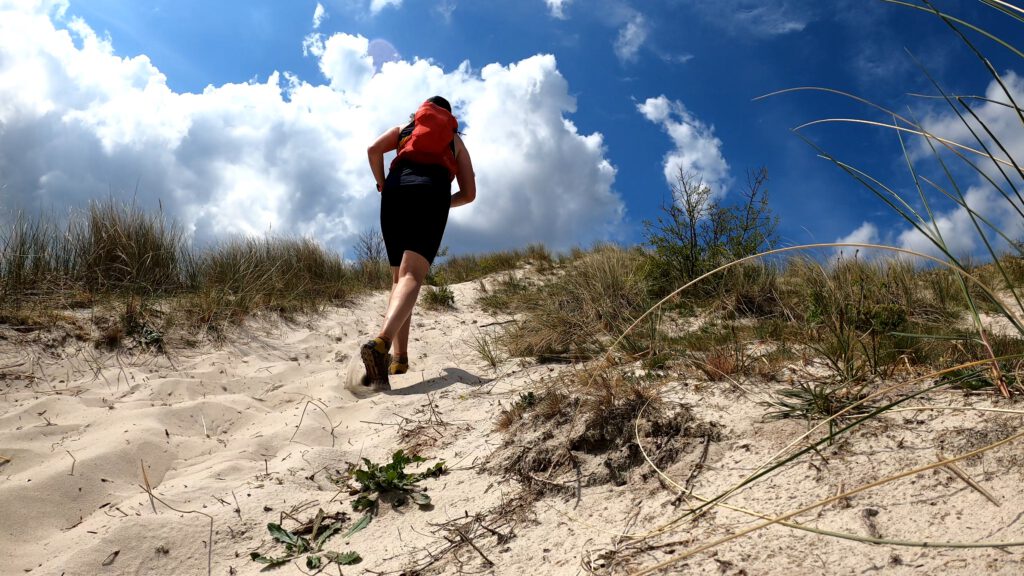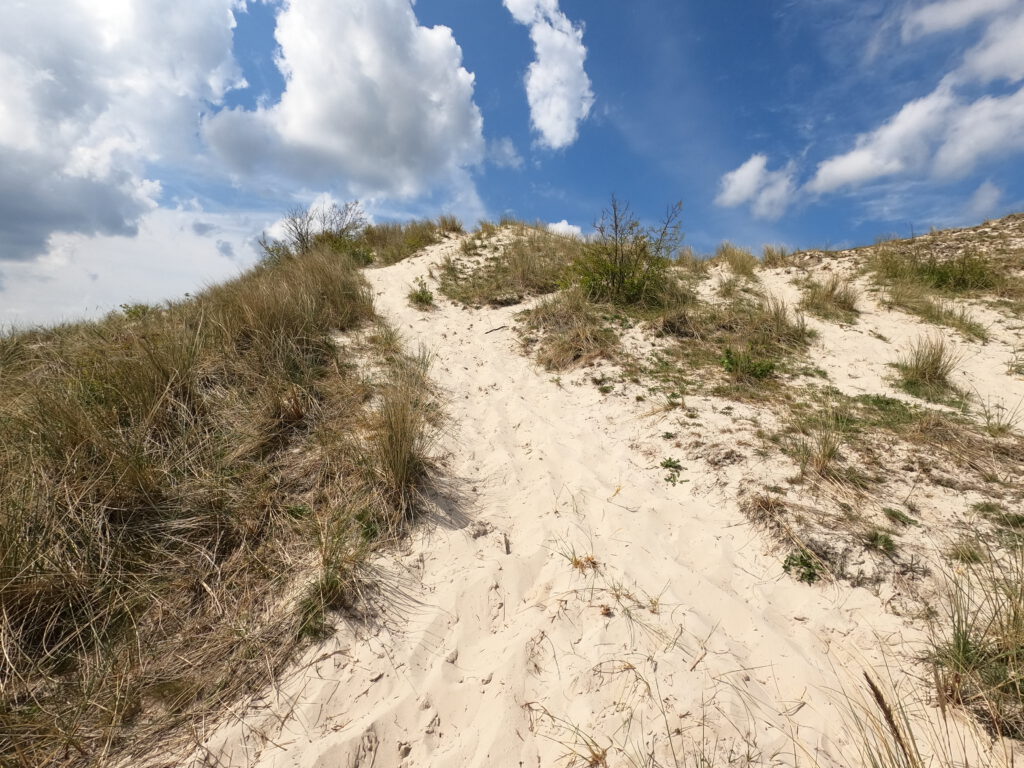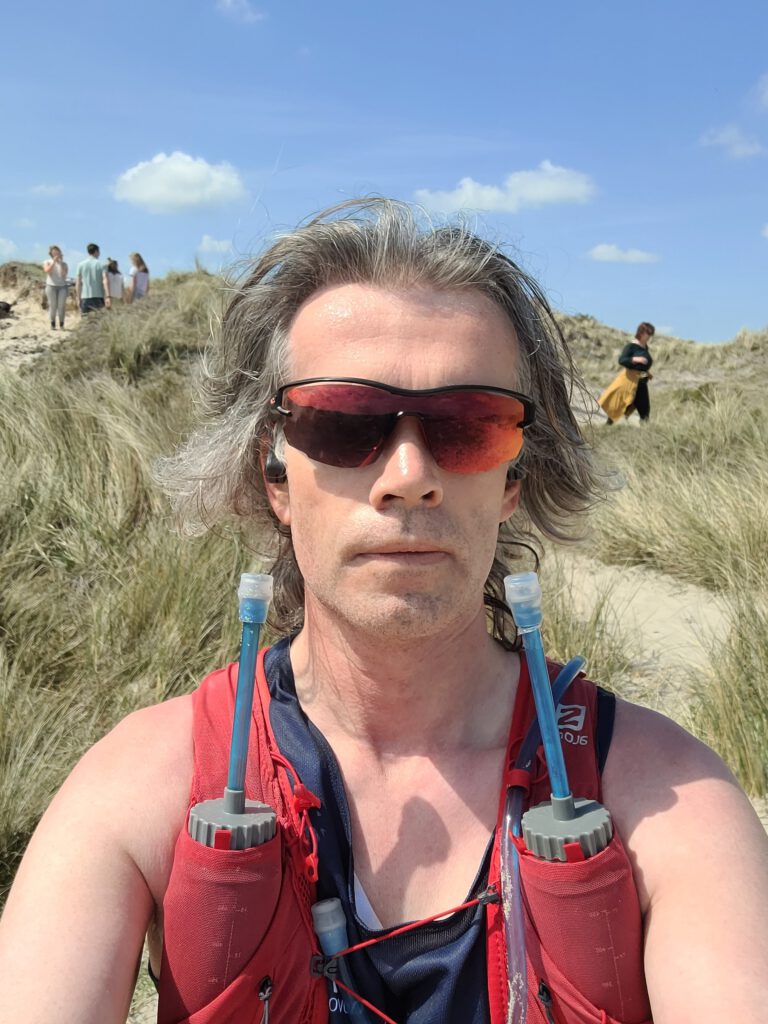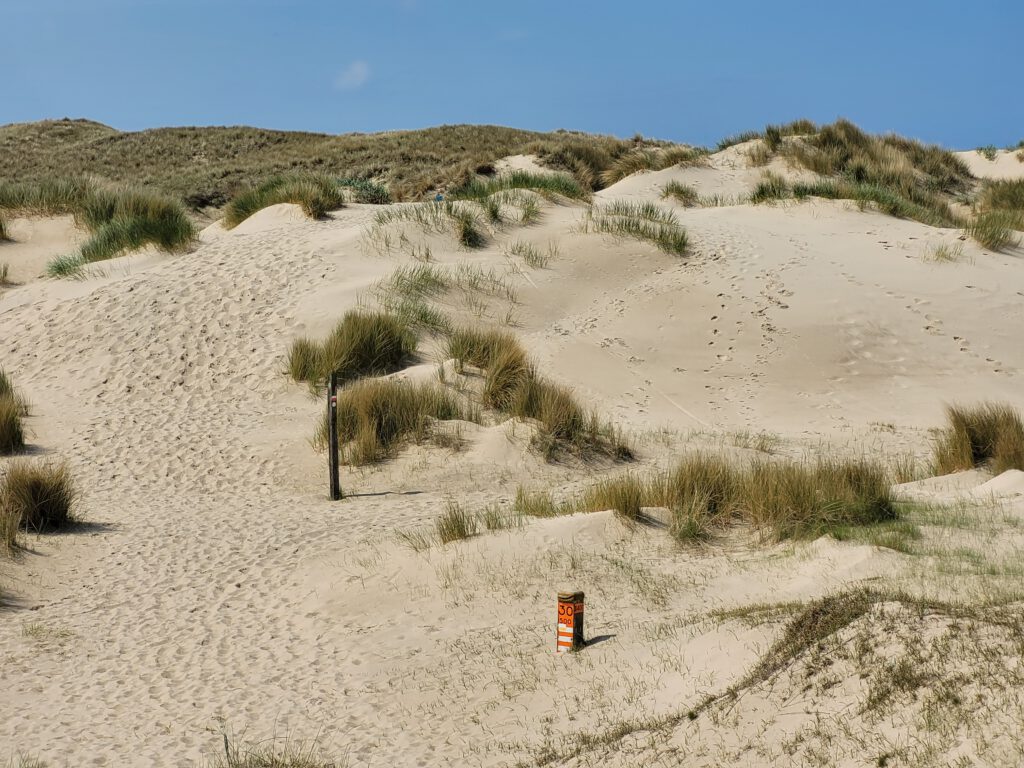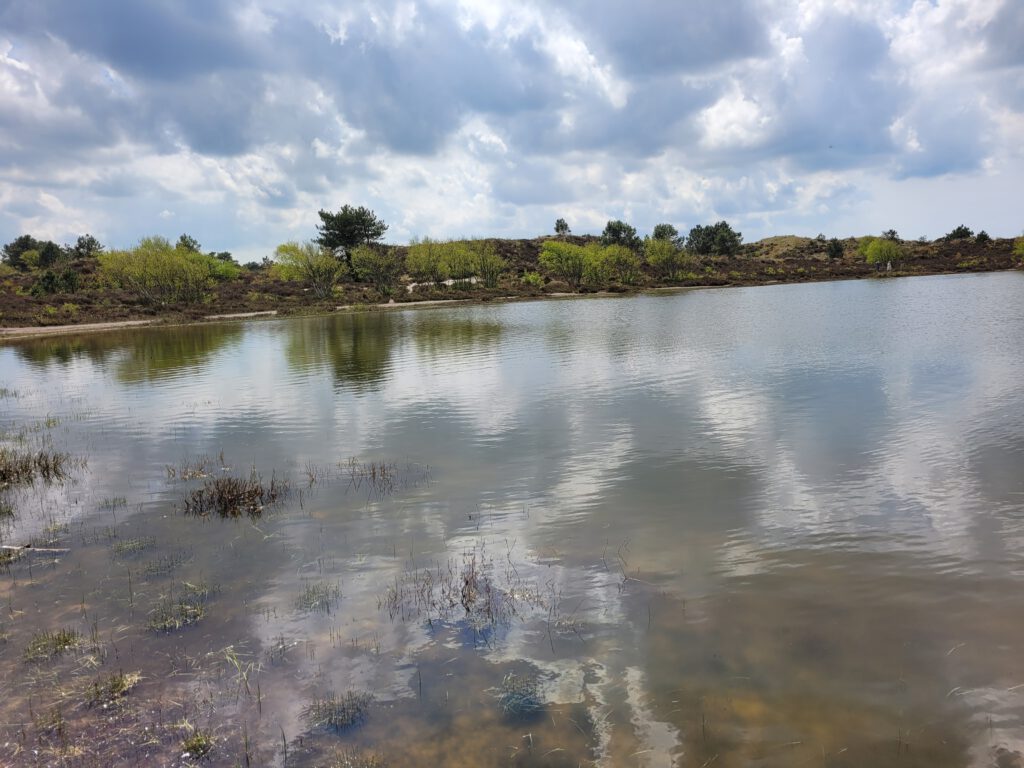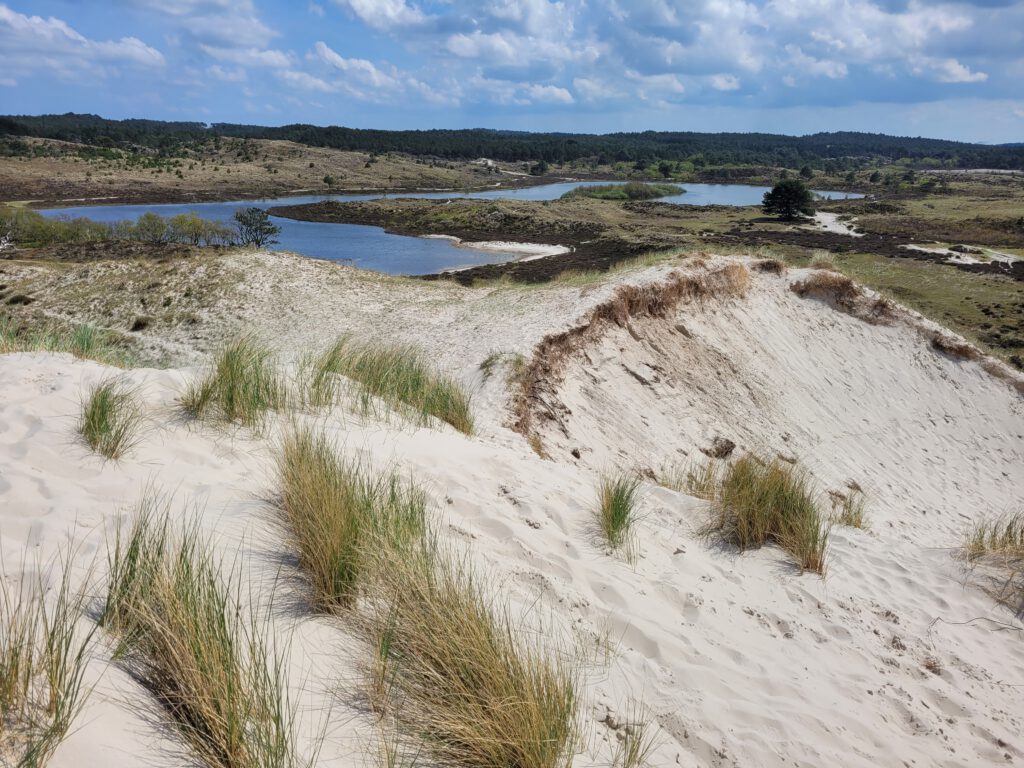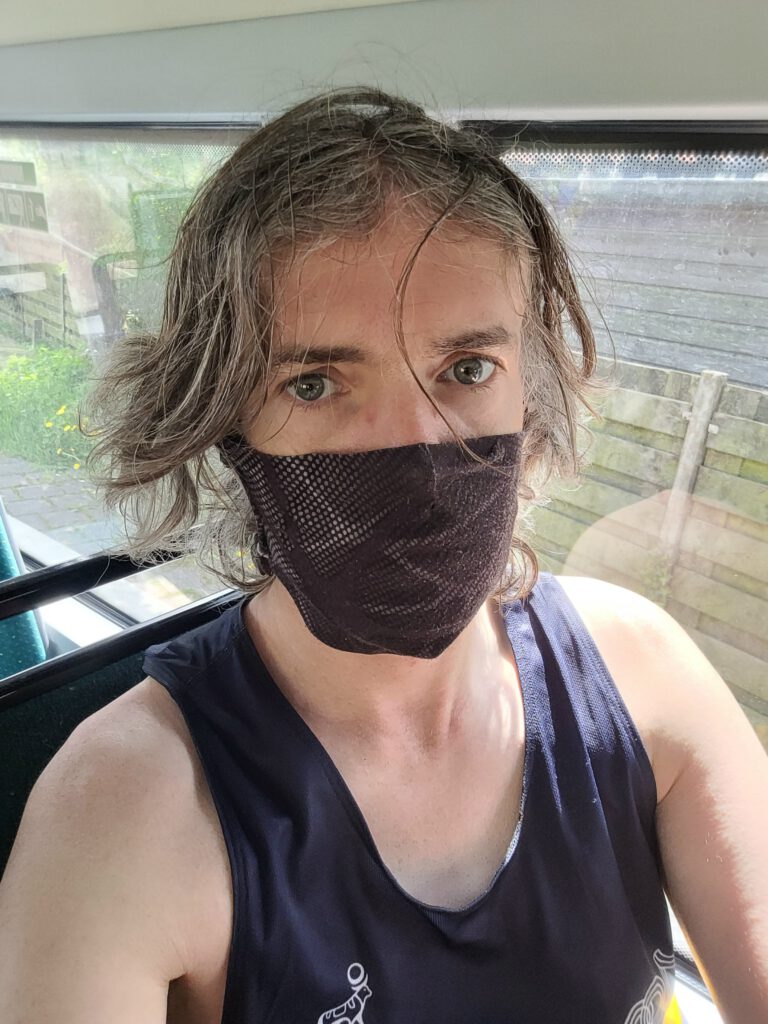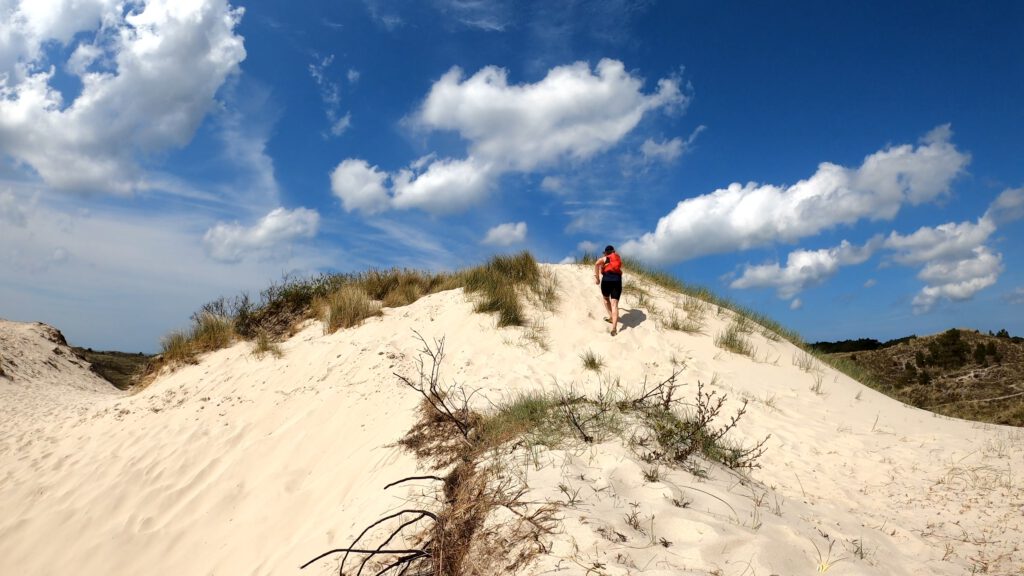
It's so easy to get carried away with big goals that we sometimes forget to listen to our bodies. How that manifested itself in a training session in Schoorl and what the consequences and signs were, you can read here.
For the third time I greeted the same couple of hikers, who had already started making jokes about my wandering around. But somehow I just couldn't find my way to the start of the 41 km route in Schoorl. The compass was spinning around, I didn't notice the small sand paths and instead of taking my own trace as a focus point, I was paying attention to the compass. What was going on here?
Those of you who read these blogs regularly may have noticed that my body wasn't really doing well in the last few runs. Especially the amount of training on asphalt led to some minor complaints – a creak here and there – in the past month. Nevertheless, I still felt like running long distances. But at the same time, there was also a mental fatigue. The toll of months of hard work on projects, less bonding to work at hand due to working from home and general boredom in days getting more and more monotonously in the home office. That fatigue, unfortunately, is not separate from the physical fatigue from training. In fact, you have to add them up and then overtraining is suddenly very close.
Trail it yourself
To increase the pressure a little further, I had also signed up for the Great Virtual Race Across Tennessee. Last year I reached the 1,000 mile point in the months of May through August. After that I felt in top condition, so I assumed I could easily make it a little further this year. That meant a lot of running and walking to get the necessary mileage. A minimum of 10 km every day was doable, right?
That challenge went pretty well the first few weeks. On days I didn't run, I went for long walks, mostly on Fivefingers which I finally bought again after they wore out 3 years ago.
Then came the invitation for the first vaccination. I immediately made an appointment for the Saturday after Ascension, because in early June I already had plans for an extensive running week. What I had learned from the Pfizer vaccination, was that you should probably train a little less the week after getting your shot. That meant that I had less time to make kilometers. So I decided to do a second long training in one week and after the half on Sunday, I would do a full on Ascension Day. At the same time I could try out the Trail it Yourself route in Schoorl – beach is just cool.
Even for obtaining that route, my haste turned out to be a pain. I registered, got an email, but no route and voucher for a drink afterwards. You only get those after someone at Mud Sweat Trails has processed your registration (which took a few days and was not in time for my run). In the end, in my stubborn wisdom, I decided to quickly look up who had already run the route and download the gpx via Strava. For those of you who haven't figured it out yet: these kind of antics again show a lack of inner peace, which can be caused by overtiredness.
Hills and spinning maps
Once I got off the bus in Bergen, the long search for the start of the route began. Contrary to what I normally do, I hadn't adapted the route to start from the bus stop. Again not taking the time to do this properly. And I really made a mess of it, although it was actually not that difficult to get to the start, especially since the roads were well indicated on the map of the watch.
I have to say that I got a bit distracted as well, because soon after leaving the village there were some nice forest paths with climbs that weren't part of the route, but that led to the start. And the real paths were less clear on the map. This in combination with fatigue resulted in a complete disorientation. Imagine what happens if you have to run more than 40 km afterwards.
Boldly going forward
It's incredible how much energy you lose when you run in circles in frustration. And how, once you've found the right path, you still can't get into a rhythm. This time the blood sugars weren't the cause of that either, it turned out during testing.
No matter how beautiful the scenery was, when you're tired, you won't run well. So I really had to tempt myself with what was still to come. I knew that there was at least one possibility for a dip in the sea along the route. And that could be a welcome relief for my already tired and stiff muscles. Also, in this area there are a lot of dunes to climb, which makes the walk really different from the flat polder landscape at home.
The dip came a lot sooner than expected. Not somewhere halfway the route, but already after about 10 kilometers from the starting point. It was nice to get a breath of sea air and to watch the birds – and fish. The sunshine was nice as well. But still the relief didn't really come. Soon I was back to plodding along.
Loose sand
As a beach runner, I am used to a lot of sand. But sand that isn't flat but is very loose because of the sun, is unfortunately a lot more tiring to run on. And there was a lot of that after the beach part. Worse still, there were loops – probably because of a fence – which meant that the landscape itself hardly changed.
At one point I had really had it. I was about halfway, but the running had already changed into walking and to be honest I was dead tired. Continuing didn't seem sensible to me: if you keep on running too tired, the chance of injuries is high.
Fortunately, at this point I turned out to be quite close to Groet, where there was a bus stop. I took my time to walk towards it. Disappointed in this day, but sure that I will run this route fully on another day.
Warning signs and lessons
Actually, of course, I should never have done this run. I was clearly tired before I started. In hindsight, it's also easy to point out a few pointers I could have paid attention to:
- stress from other work (this counts for your fatigue, even if you want to run for a long time to get it off your chest);
- in the mirror you look tired;
- stiffness/pain after previous long walks on asphalt;
- not taking the time to plan properly – agitation;
- bad mood/negative emotions;
- simple one: resting heart rate not between 44-48 (standard for me in good shape), but at 52;
- sleeping poorly and going to bed too late;
- easily distracted as with the map.
The days after this run I took the necessary rest. Also in terms of walking. And seriously, I set an alarm clock to go to bed on time.
The extra rest certainly helps to get some energy back and my mood has turned for the better. I did notice – and that is one of the biggest traps of running in fatigue – that my right calf is not completely happy. Because of the fatigue I probably didn't run very well and that, together with barefoot walking, has put stress on the calf. That's why I'm not training that much right now, hoping to get a good start on my adventure for the Boucle du Diabète, where I make 6 days mileage for the French JDRF department.
The dresscode is blue, I already have a few blue shirts and I can't keep you from the one below. It is the running shirt of Team Novo Nordisk, a pro cycling team with only type 1 diabetics.

